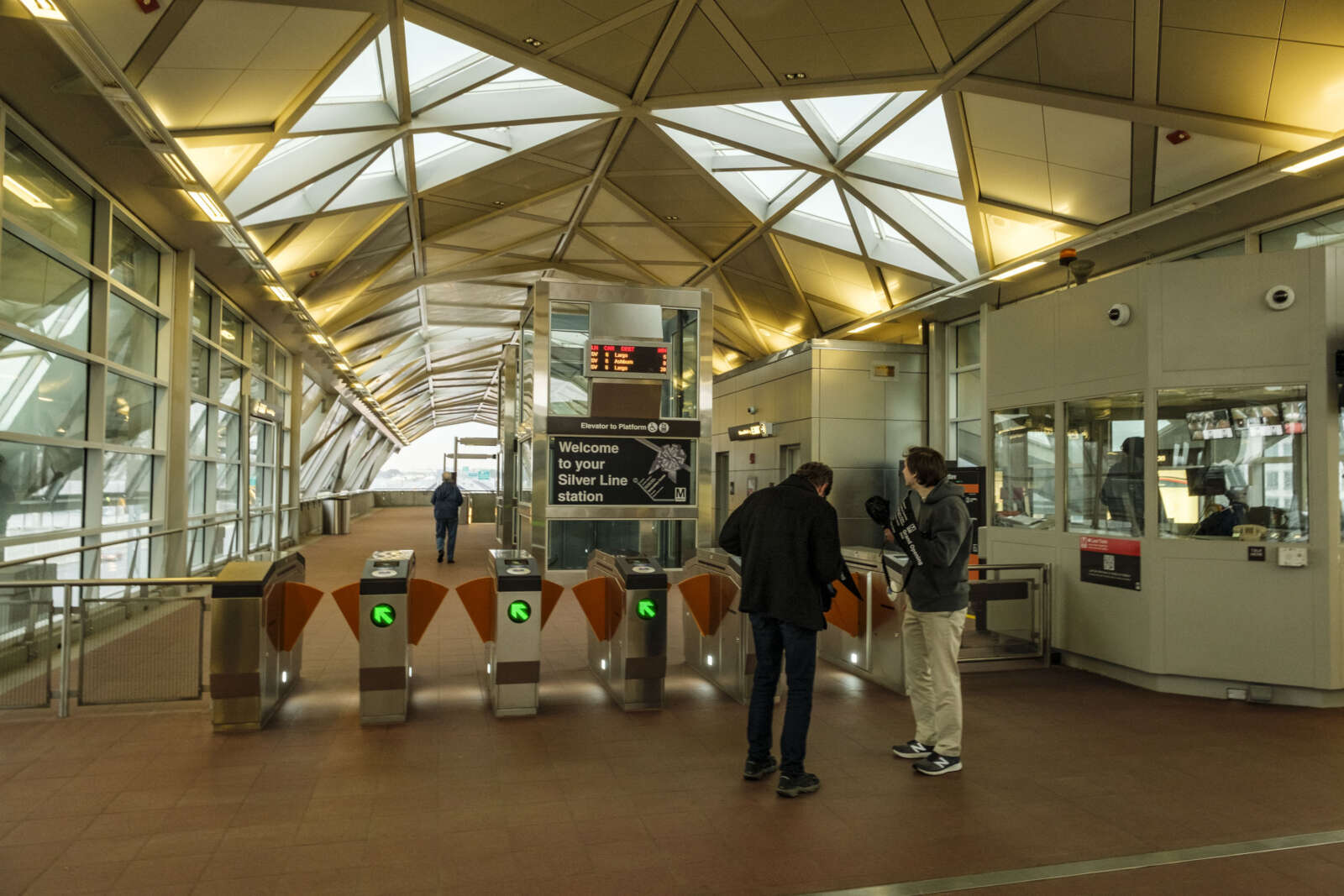
(Updated at noon) Trains are taking off at the Dulles Airport Metro station one year after the opening of Phase Two of the Silver Line — but ridership at the other five stations of the $3 million project has a long way to catch up.
In the backdrop of post-pandemic recovery, ridership for stations beyond the airport is modest, according to Metro data.
More than 3.5 million trips later, daily average ridership on the rail extension hovers at 3,600 trips. Metropolitan Washington Airport Authority (MWAA) planners had hoped for 20,000 riders a day when the rail line was being planned in the early 2000s.
But that was well before the pandemic upended how people work and travel, among other societal trends.
Jordan Pascale, a spokesperson for the Washington Metropolitan Area Transit Authority (WMATA), emphasized that “many factors have changed since then,” especially the massive shift to telework that has contributed to reduced revenue and a $750 million budget shortfall.
As more companies usher — and, in some cases, threaten — their employees to return to long-empty offices, Pascale notes that the Metro system has recovered more than half of the riders it lost at the onset of the pandemic.
“Our ridership has continually increased, but recovered unevenly with strong ridership on weekends, Tuesdays, Wednesdays, and Thursdays,” Pascale said.
One year ago today, the long-anticipated Silver Line Extension opened six new stations in Northern Virginia. They’ve now seen 3.5 million trips!
The extension took a lot of work, and I’m thrilled to see so many Virginians making good use of it every single day. https://t.co/FWFdfaDU1p
— Rep. Gerry Connolly (@GerryConnolly) November 15, 2023
While Dulles Airport boasts more than 1.2 million cumulative entries, the stations in Herndon and Reston hover in the mid-to-high 400,000s.
Herndon has had more than 482,000 entries since service began last November, compared to 431,000 at Innovation Center and 450,356 at Reston Town Center. Ashburn has the second highest ridership figures (774,000), while Loudoun Gateway — which is on the west end of the rail — stood at 156,000, as of Nov. 12.
“The biggest wins are probably the new connectivity with Dulles Airport and across the Dulles Corridor,” said Hunter Mill District Supervisor Walter Alcorn, who represents Reston. “The rail line provides convenient options for airport passengers and workers, and for many who live and work in the Dulles Corridor. It has also reduced the number of vehicles driving to and parking in the commuter garage at the Wiehle Reston-East station.”
The next step is creating the infrastructure and development to support Phase Two, which took more than 50 years to come to fruition.
That process is “just starting,” according to Michael Hartnett, a senior director of research at real estate firm JLL. The firm released a report on the completion of the Silver Line earlier this month.
The population within a half-mile of the station is expected to grow by 11% in the next five year, according to Hartnett’s research. It’s expected to carry a disproportionate share of the overall growth anticipated in Northern Virginia.
Four major developments are planned or nearly complete along the Silver Line extension, including Halley Rise in Reston, Rivana at Innovation Station, and Moorefield Station in Ashburn. They are bringing 1.9 million square feet of office space, more than 7,000 residential units and more than 8 million square feet of mixed-use and retail space, Hartnett said.
Some stations are head of the curve when it comes to redevelopment. But surrounding development may take time to boost ridership overall.
Ridership is surprisingly modest at the Reston Town Center station compared to less developed stations like Herndon, even though it’s surrounded by Reston’s urban core and connects directly to Brookfield Properties’ recently built Halley Rise development.
(Correction: This story initially said Halley Rise was built by developer JBG Smith.)
Hartnett says the Reston Town Center station has the most unique strengths, serving as a doorstep to one of the region’s top town centers with more development under construction. He also considers it to be the most pedestrian-friendly of the six new Metro stops.
In some areas, walkability is more of a reality than in others. Alcorn says building infrastructure and pedestrian connectivity around the Metro stations is a top priority. That would mean adding crosswalks, bicycle lanes and sidewalks.
“For existing communities the top areas for improvements are improved pedestrian connectivity through safe and convenient trails, sidewalks, and crosswalks,” Alcorn said. “Short-term this means more and higher visibility crosswalks, better separation between vehicle lanes and [pedestrian and bicycle] paths, and lower vehicle speeds as [the Virginia Department of Transportation] allows.”
Fairfax County planners are taking a close look at options for improving the Wiehle Avenue corridor. A major flashpoint is a crosswalk at the Dulles Toll Road, the future of which is pending further analysis by transportation planners.
“A very productive community workshop was held on Nov. 13 and many excellent ideas were proposed to make that stretch safer and more inviting for walking and biking,” Alcorn said.





